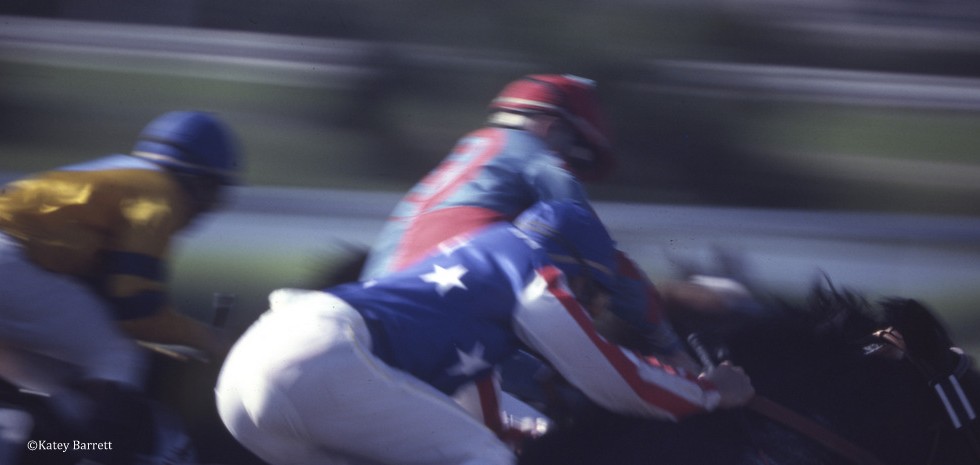
The design of your own silks – a unique and personal imprimatur – is, perhaps even more than naming great sires and stables, the thread that truly weaves the owner into the rich, romantic tapestry of the Sport of Kings. Thoroughbred horseracing was first organized as a sport by King Charles II of England, who established a regular race meeting at Newmarket in 1671 for the pleasure of the nobility. (The earliest known meeting in the American colonies was in 1655, on Long Island).
The concept of using individual silks in horse racing was first introduced in Newmarket, England in 1762.
Although the chariot drivers of ancient Rome may have been the first to sport “racing colors” (they wore identifying capes and headbands of brilliant hues), the concept of using individual silks in horseracing was first introduced in Newmarket, England, in 1762.
The English Jockey Club was, at that time, a completely proprietary organization peopled by the most prominent racehorse owners of the day. There were, in all, seven Dukes, one Marquis, four Earls, one Viscount, three Commoners, one Lord and two Baronets. To distinguish at a glance which horses in the running were owned by whom, they submitted “colors.” One of them – the color “straw,” chosen by the Duke of Devonshire – is still used by that family’s famed stable today. But, by far, the most celebrated of all silks was chosen 25 years later: “Black with white cap”…the colors adopted by Lord Derby.
Today, all nations combined, there are over 20,000 different silk designs registered with the Jockey Club. Given the number of variations permitted in jacket design, combined with sleeve design, individual silks could run into the tens of millions without repeating one another.
There are usually purveyors or designers of silks open for business in makeshift offices or trailers on the “backside” area of tracks with active meets. They are experts in design and color and will help you to effectively interpret both your self-image and your dreams in your personal silks. Today’s “silks,” by the way, are made of nylon – for lightness of weight, durability and washability. The silks used in warm climates or in summer are of nylon taffeta; those used in winter (or in stakes races, for high sheen) are satin-weave nylon. But they are still hand-made and hand-sewn – every piece.
Before deciding on your silks design, you might want to visit the “silks room” at your local major track, to go through the silks book for ideas – and to see if your design is already taken. (Even if it is, the rule is that after five years of non-use, or “abandonment” by the registering owner, those silks can be adopted by another owner – so check the dates!).
There is NO official national registry of silks. It has happened more than once that two horses from different states racing against each other are registered, in their respective states, with the same silks. In that case, stewards at the racing track determine who runs in the colors and order that one jockey’s attire be altered accordingly. Any owner racing in New York must abide by certain specifications: all designs or emblems must be repeated on both the front and back of the jacket, and the color navy blue is not permitted because it “reads” as black at a distance.
The California Horse Racing Board has only a few requirements regarding silks, or “colors,” as they are legally referred to. The colors for each owner must be registered with the Clerk of the Course at any track where the horse is to run. Silks may not be changed without approval by the stewards, and may not be “rotated” to accommodate a horse’s various owners (i.e., if the horse is owned jointly by owners with other business forms in operation at the track).